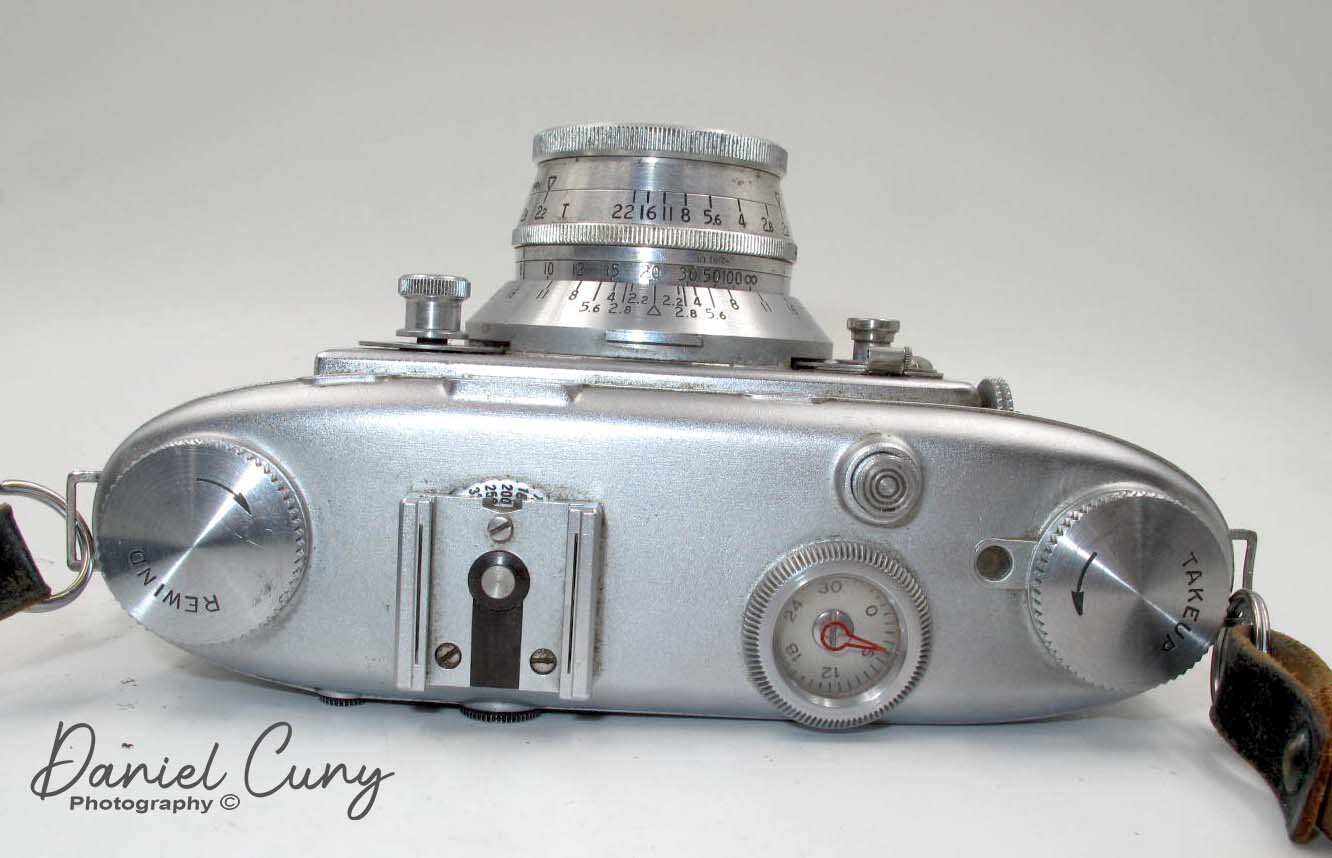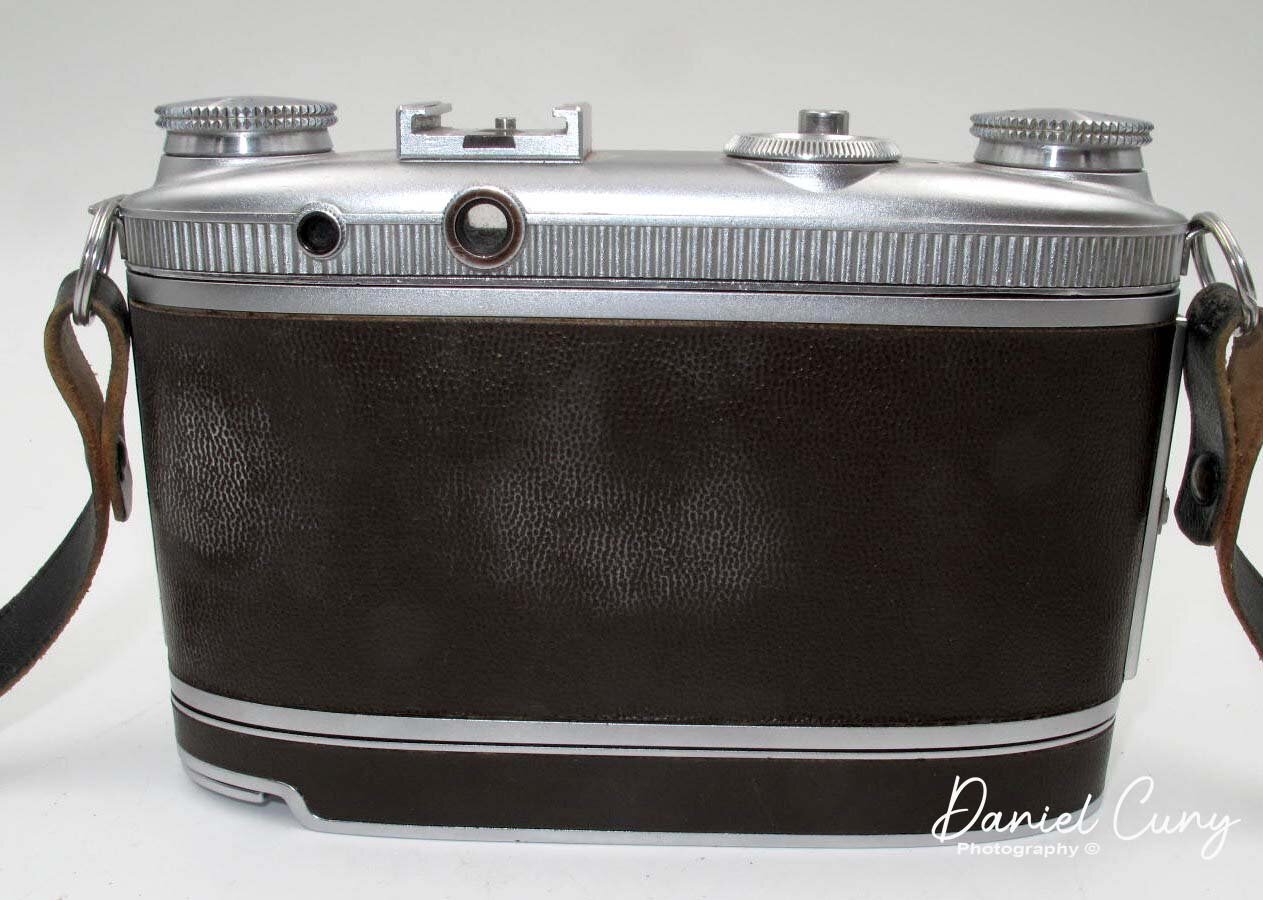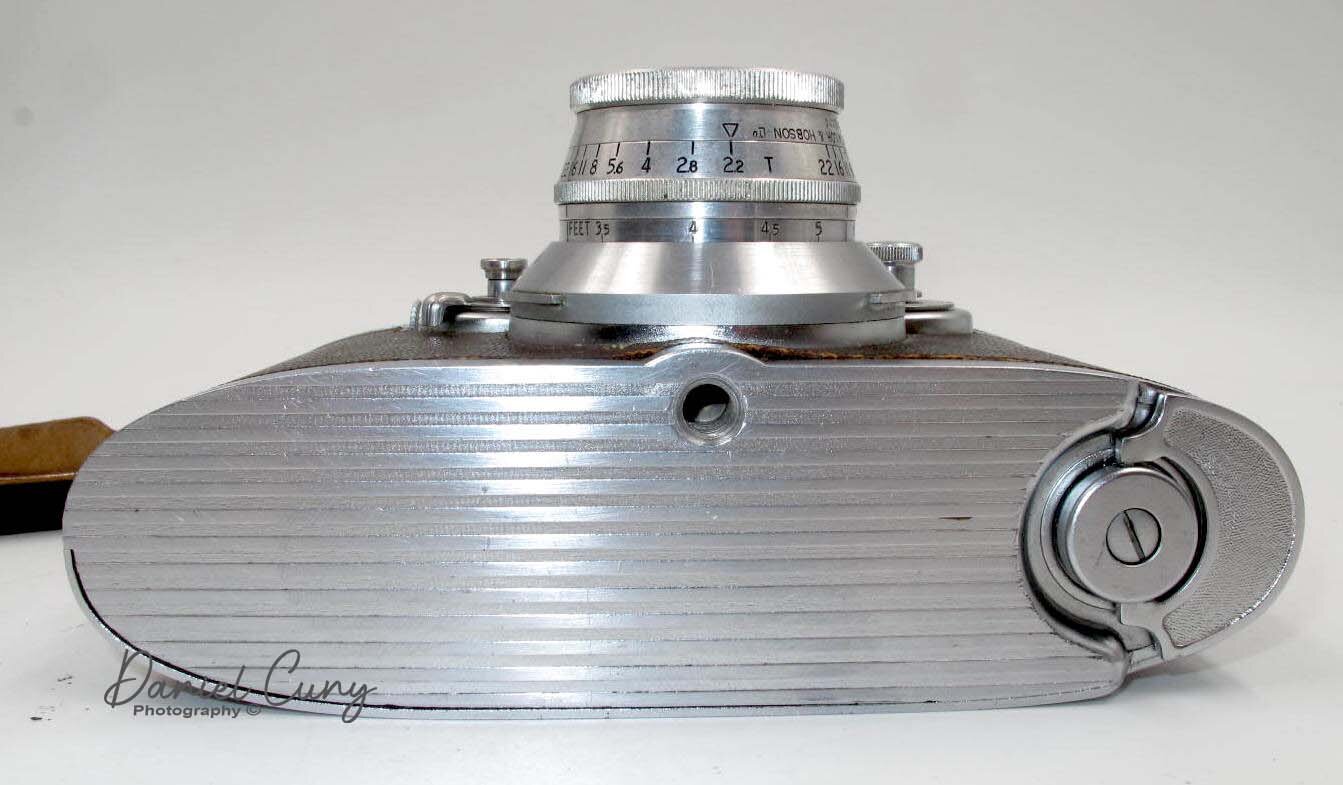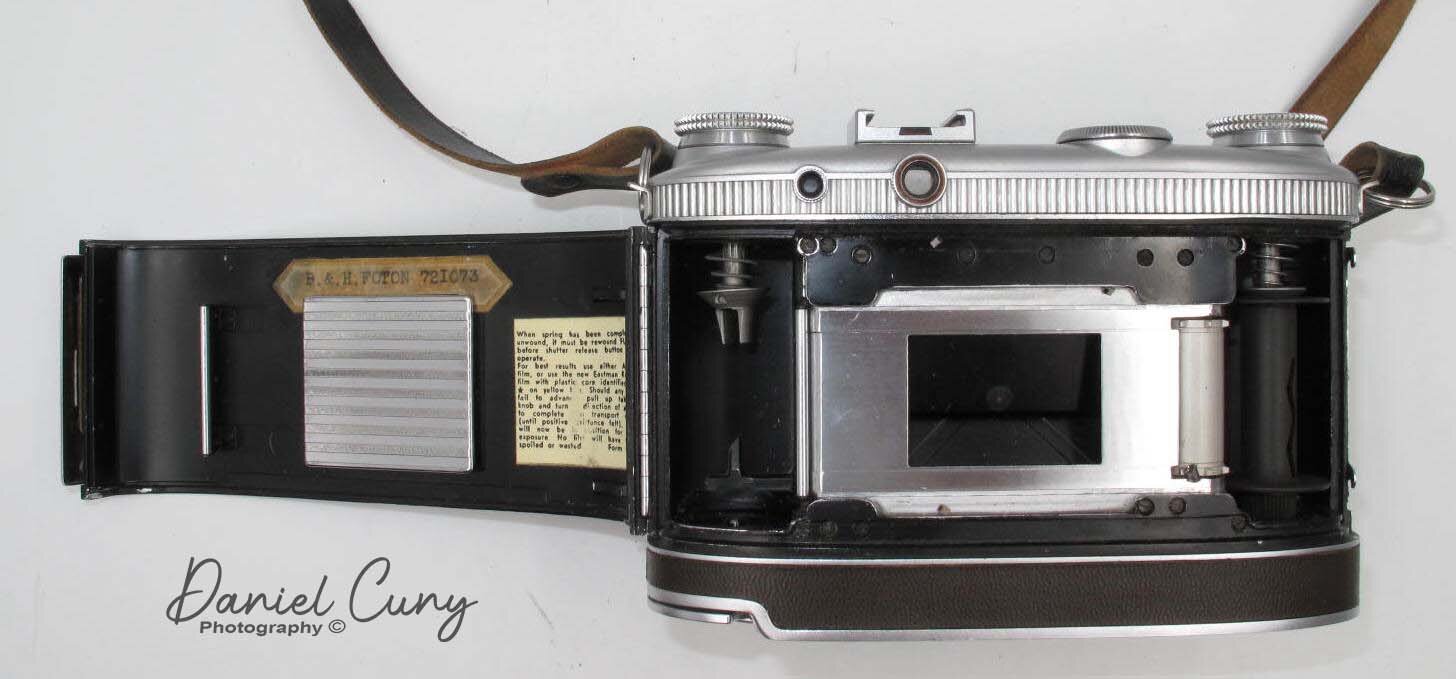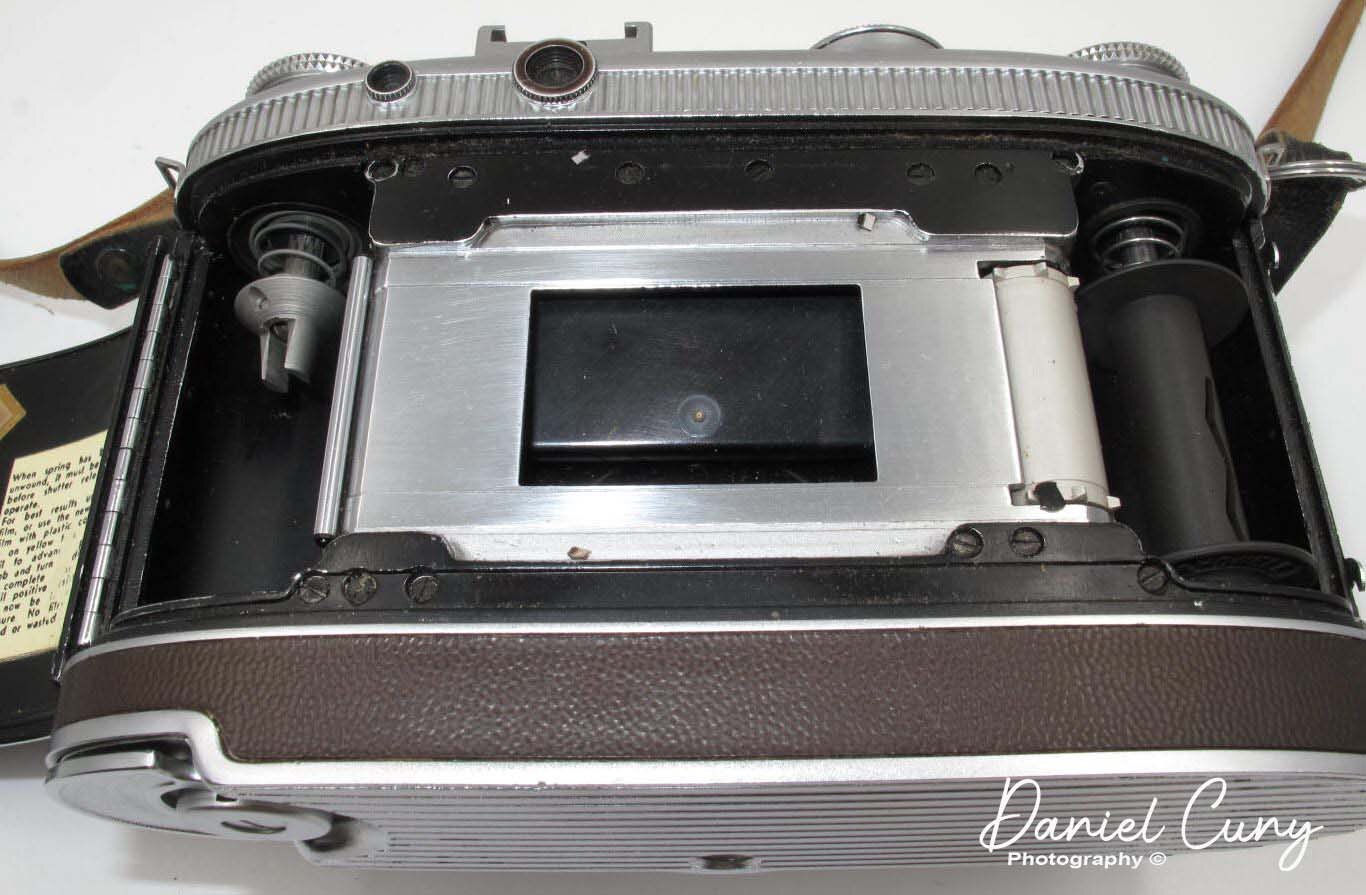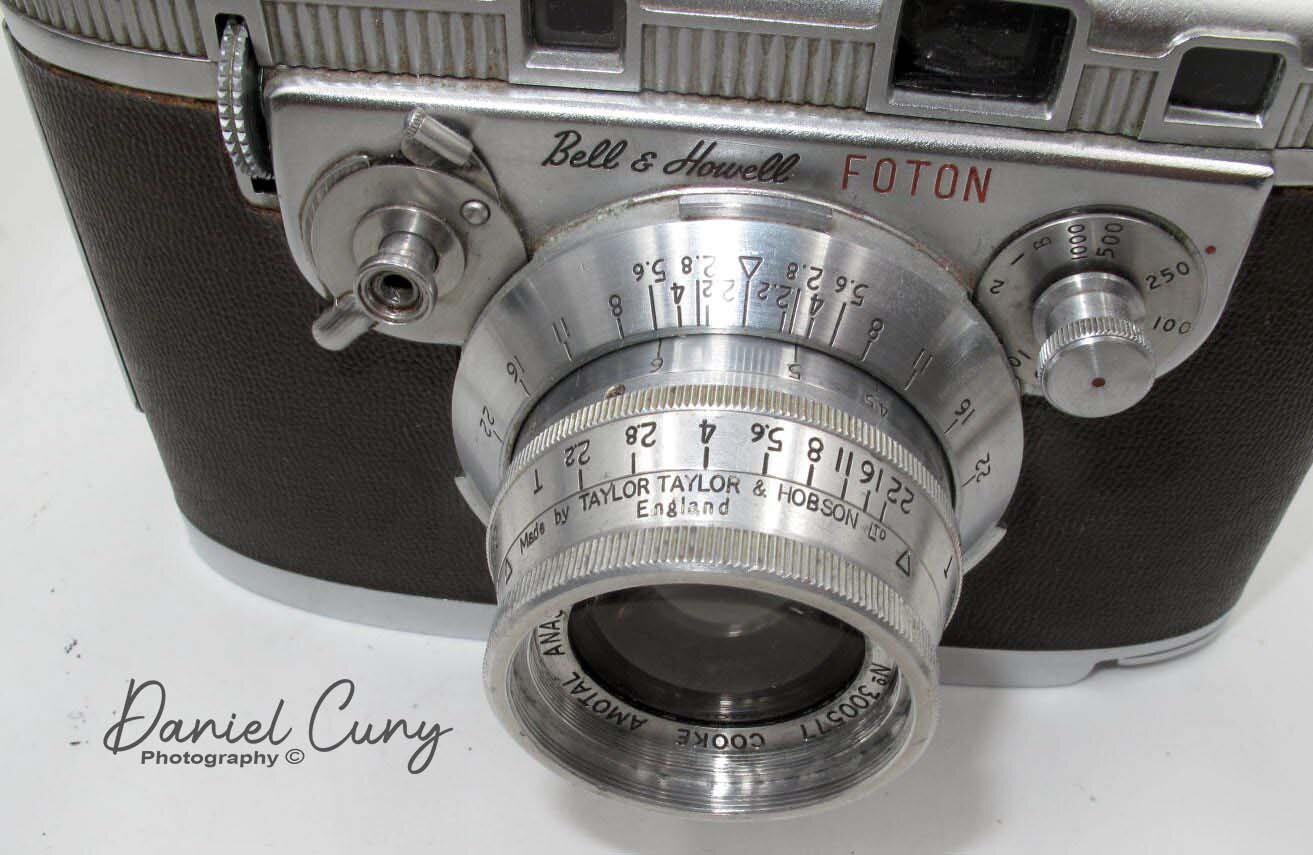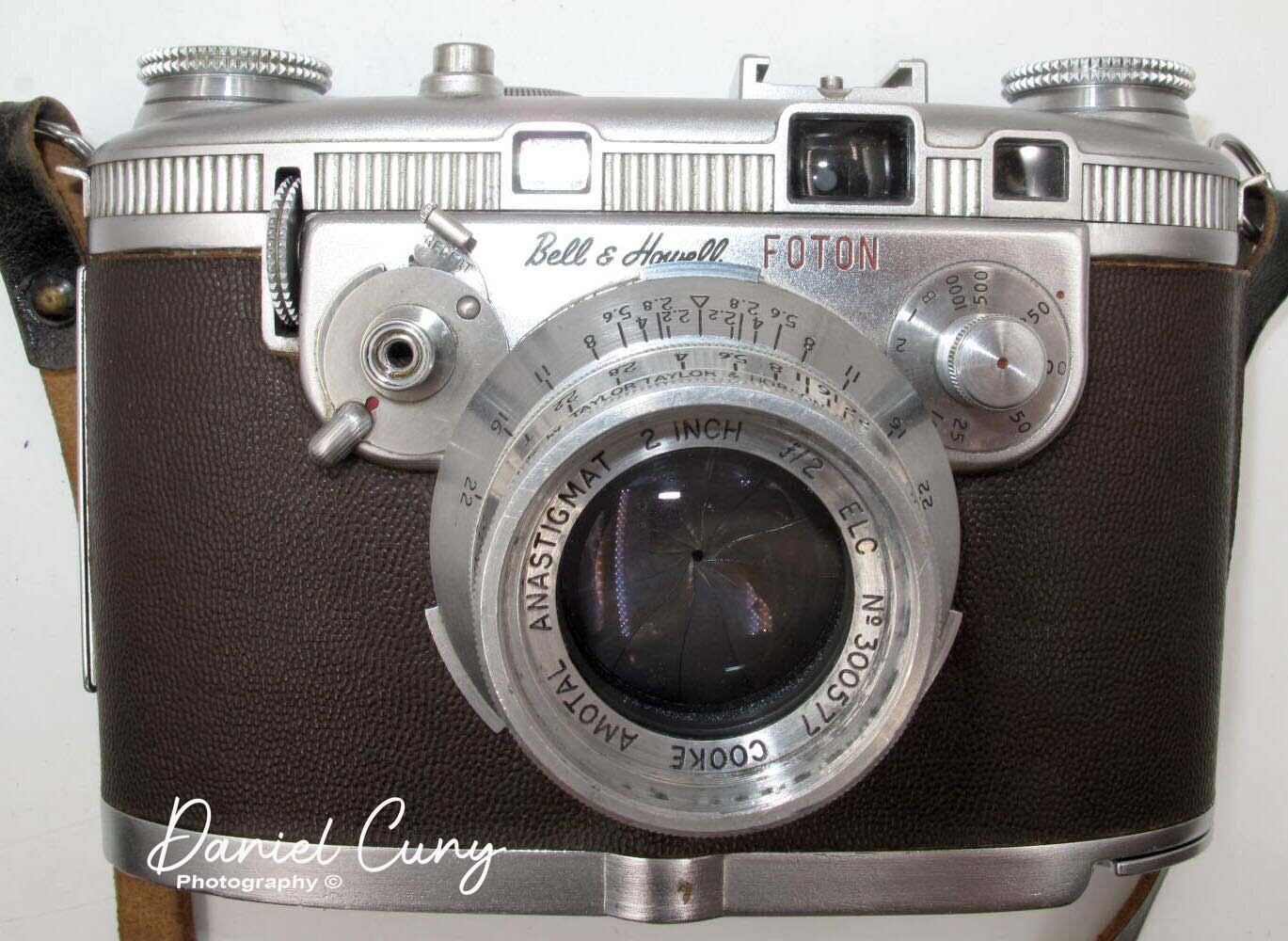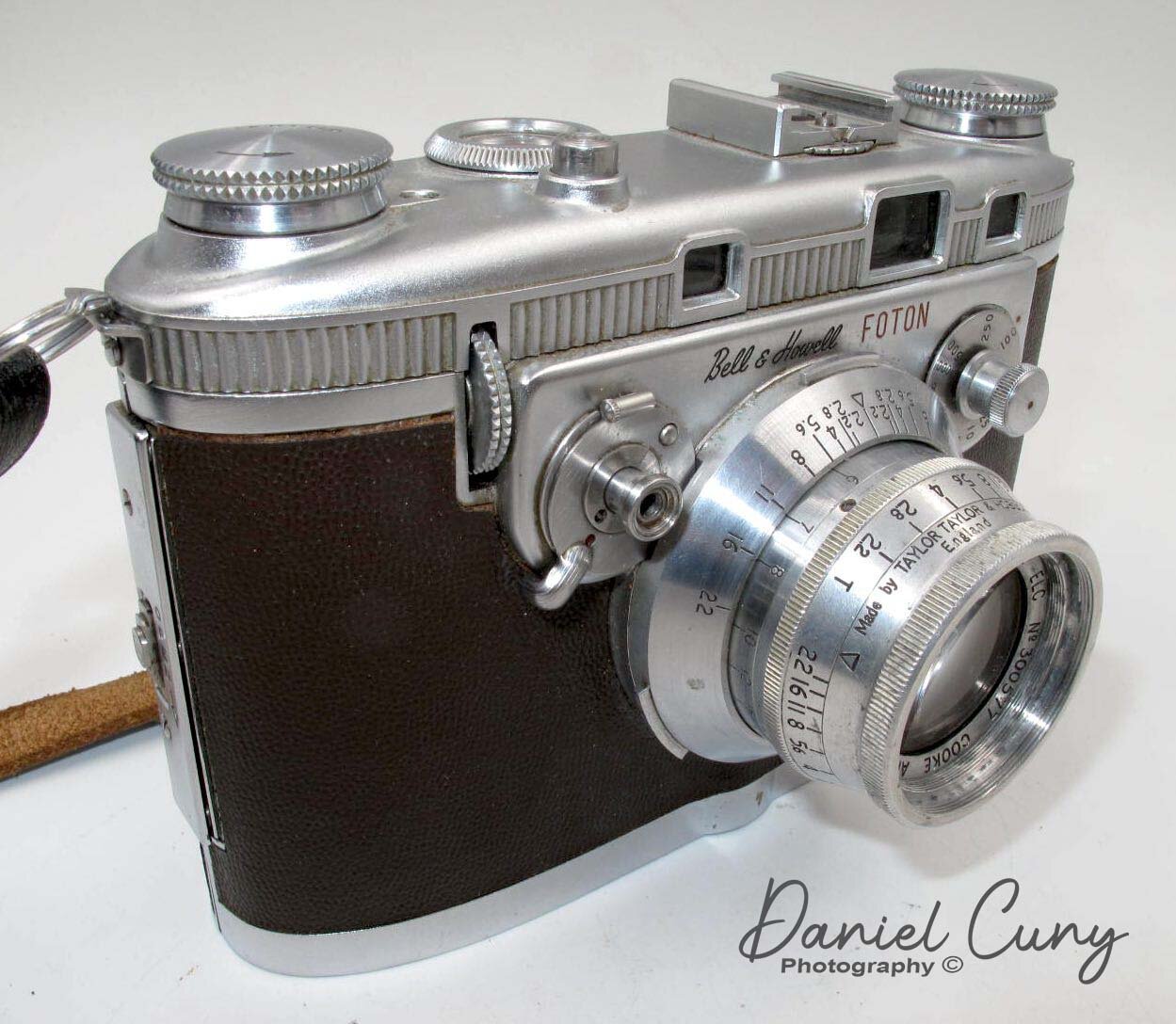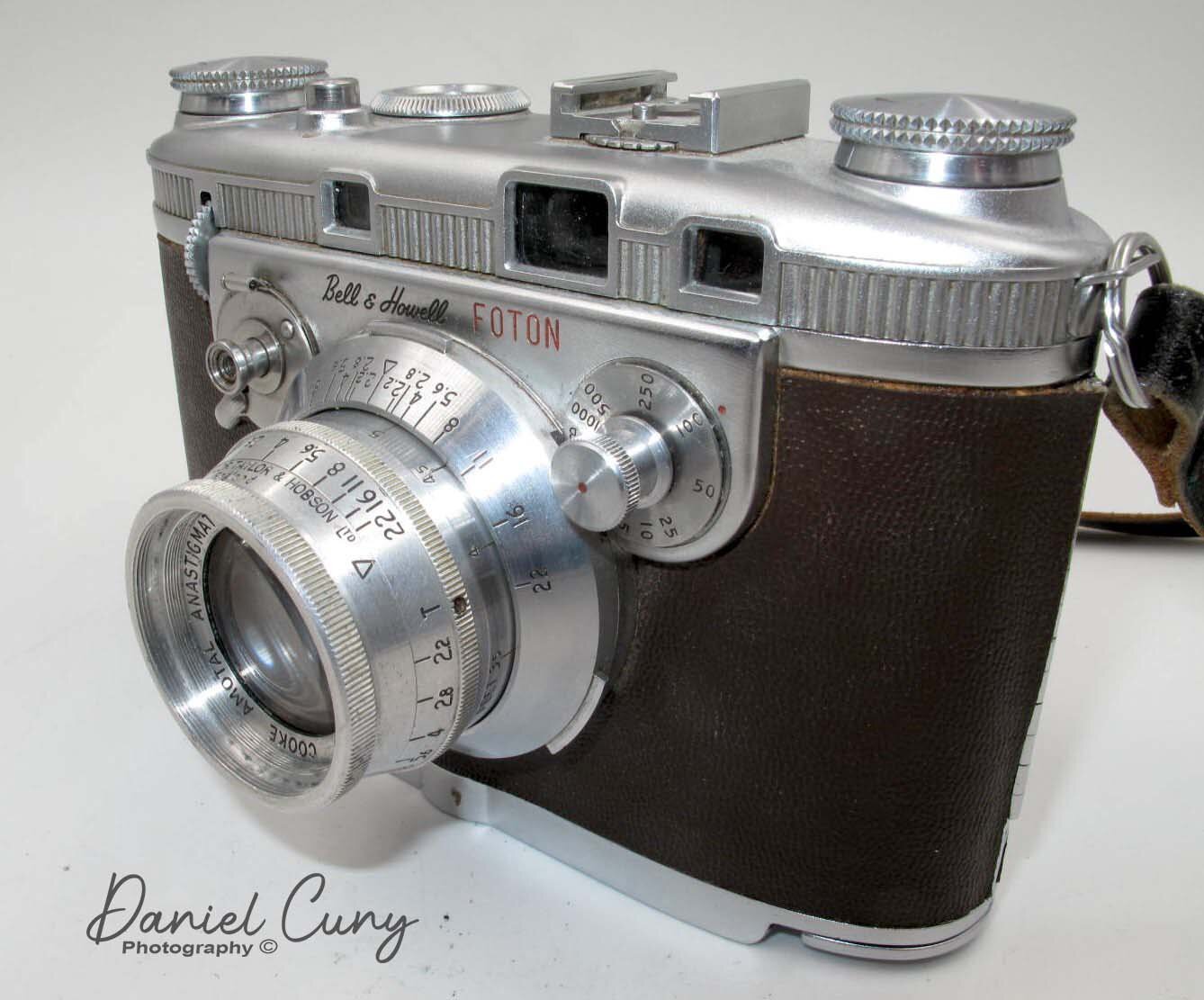A tremendous post-war 35mm rangefinder camera with the capability of a 6 FPS motor drive. This beautiful brown and chrome camera is a bit larger than the usual Leica, Nikon, and Canon rangefinders of the days, measuring 5.75” wide, x 4” tall and 3.25” deep with the normal Cooke Amotal 2” f2.2 lens made by Taylor, Taylor & Hobbs Ltd of England. The camera weighs in at a little over 2 lbs. (2 lbs. 2 oz.), but it fits into your hand nicely. The price tag at release was around $700.00 which was very high for that time period.
The camera was Bell & Howell foray into 35mm cameras and was introduced in 1948. The camera had some really advanced features. The ringsider focus was on the front of the camera and rolled up and down next to the shutter release making the ability to focus and shoot very easy. Nikon, Leica, and Canon had similar features, but they were on the top of the camera as opposed to the front.
The shutter release area had a few different functions. On the top of the shutter release, you could pick between single frame with the top knob in the lower position, and sequence shooting with it in the upper position. Below the shutter release was another switch that allowed the user to lock the shutter so you couldn’t fire the camera when it’s locked position. On the other side of the lens on the front of the camera is the shutter speed dial, which goes from “B” to 1/1000. The shutter speeds under 1/250 drops to 1/100, then 50, 25, 10, 5, 2, 1 as opposed to what’s normal now. The camera has an odd vertically traveling shutter with a secondary guard in front of it which you can see when the lens is off.
The two small openings on the back are the rangefinder focus and 50mm viewfinder which doesn’t have parallax correction. On the bottom of the camera is the motor drive winding mechanism. You can get up to a total of 17 exposures on a full wind, which is impressive.
The camera normal lens is a screw mount lens and employs a T-stop system which is mainly used in the commercial cinematography world. This makes sense for a company known for manufacturing motion picture cameras. The telephoto lenses use the outer bayonet which is around the lens.
The back of the camera opens from the right to the left, which is unusual for the majority of the 35mm cameras made, but the camera loads like any other 35mm camera.
For the camera collectors, this is a fairly difficult and pricy camera to find. They stopped production in the early 1950’s because sales for the camera were very slow. Sources say there were less than 17,000 made, but they are extremely well built and when found, they are generally in working condition which is a testament to how well they were made. I’ve had the pleasure of owning 2 so far. One was purchased in a “lot” of items purchased. I noticed the Foton in the photos but the camera was on its side and had to ask the seller if that was a Bell & Howell camera which they confirmed. Luckily I bought the entire lot for under $100.00.

